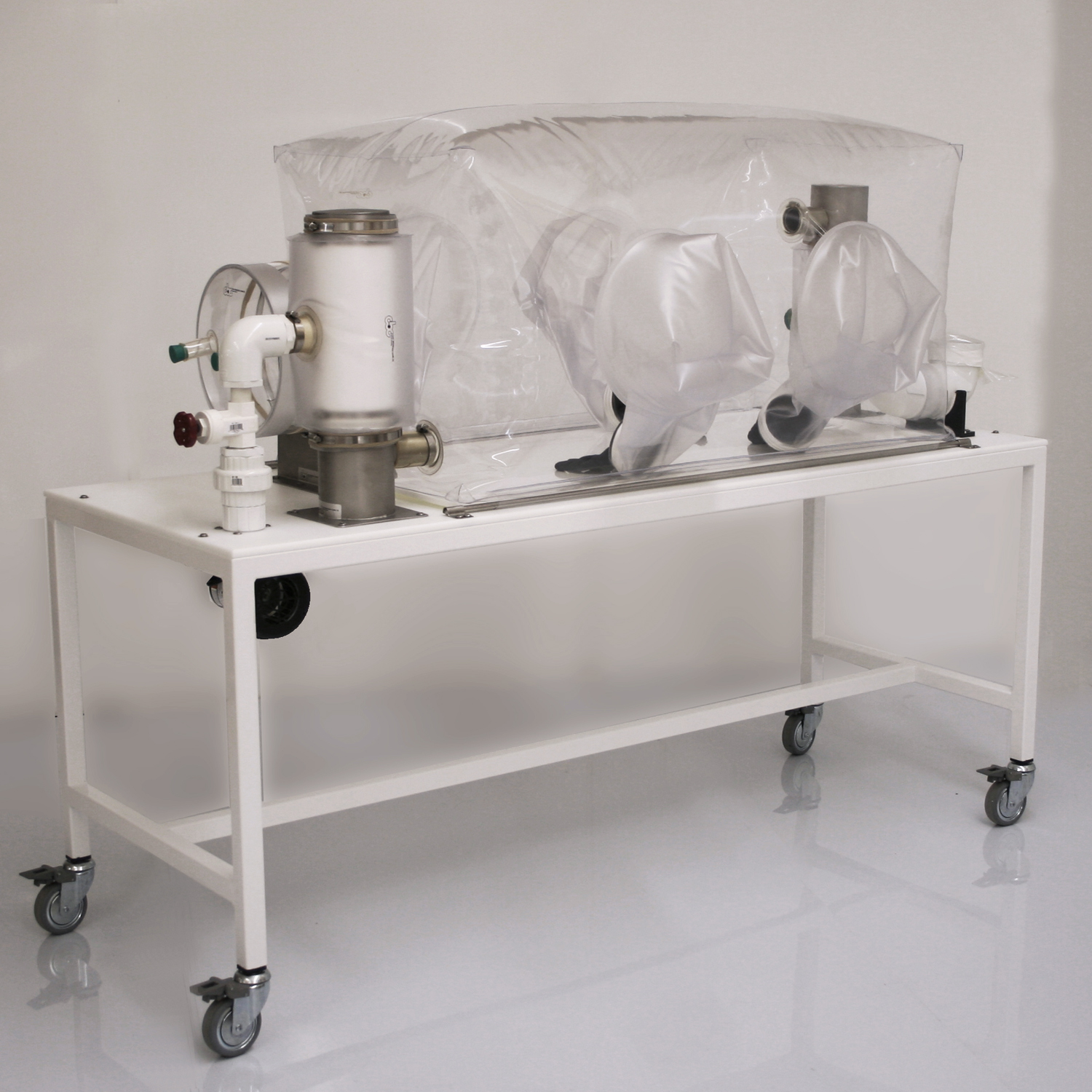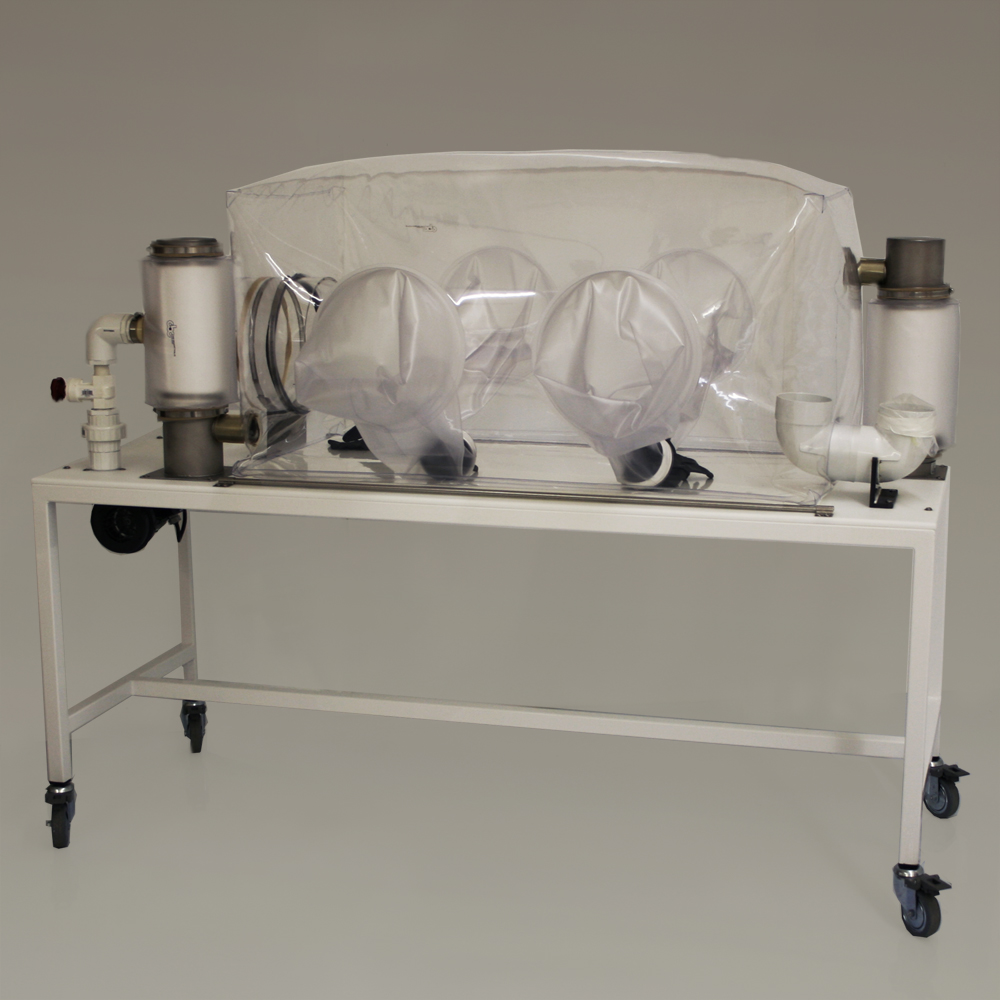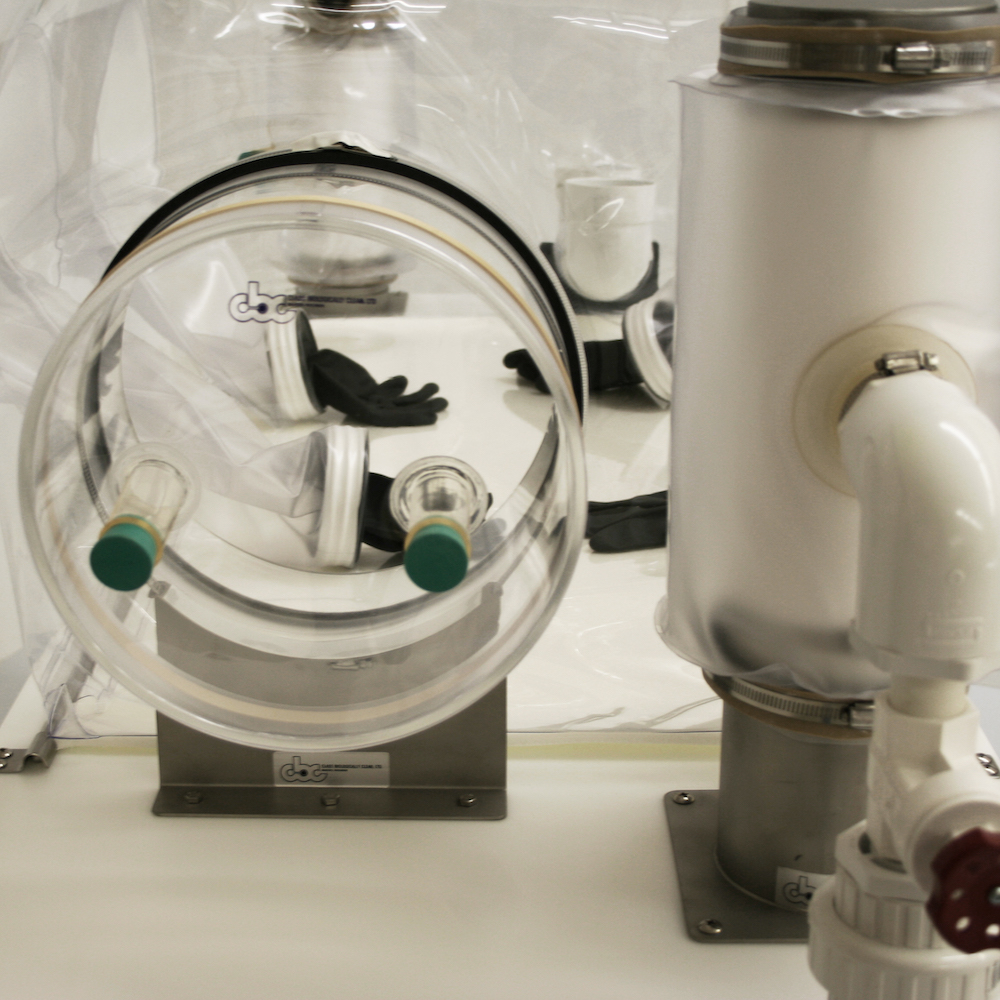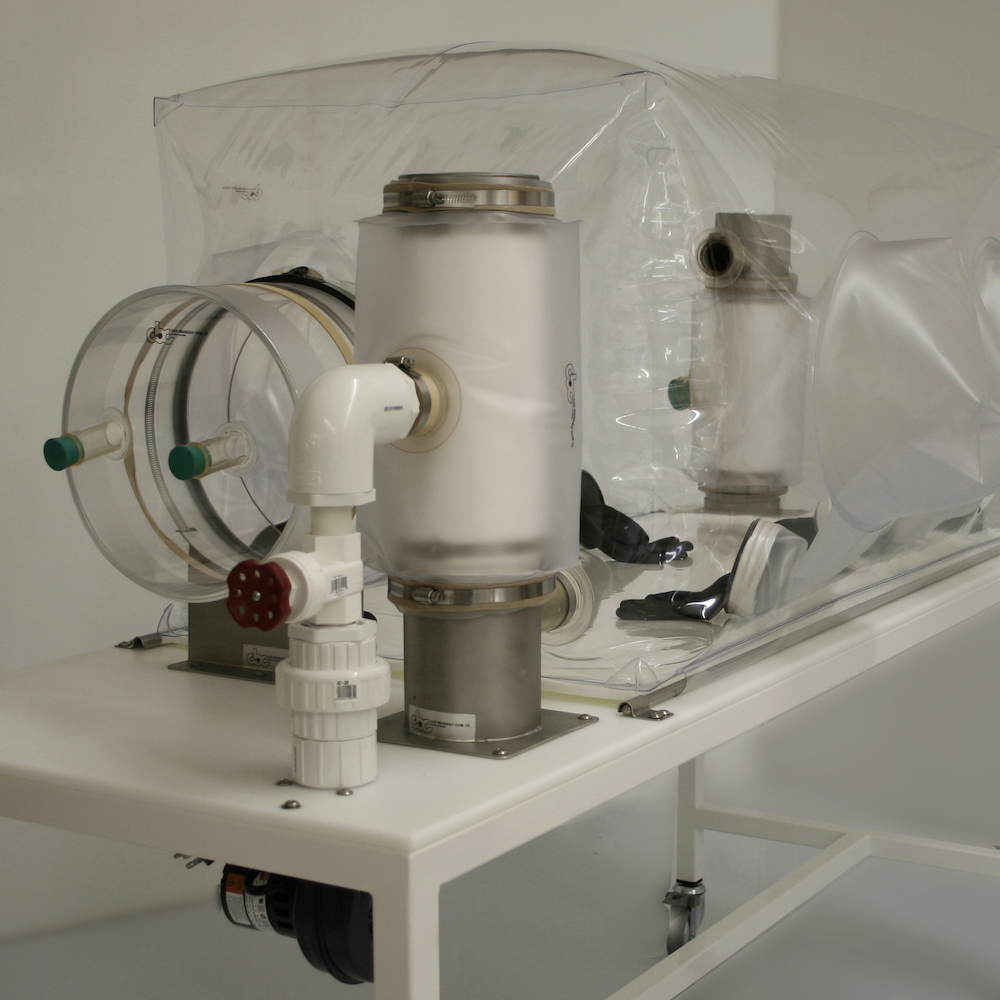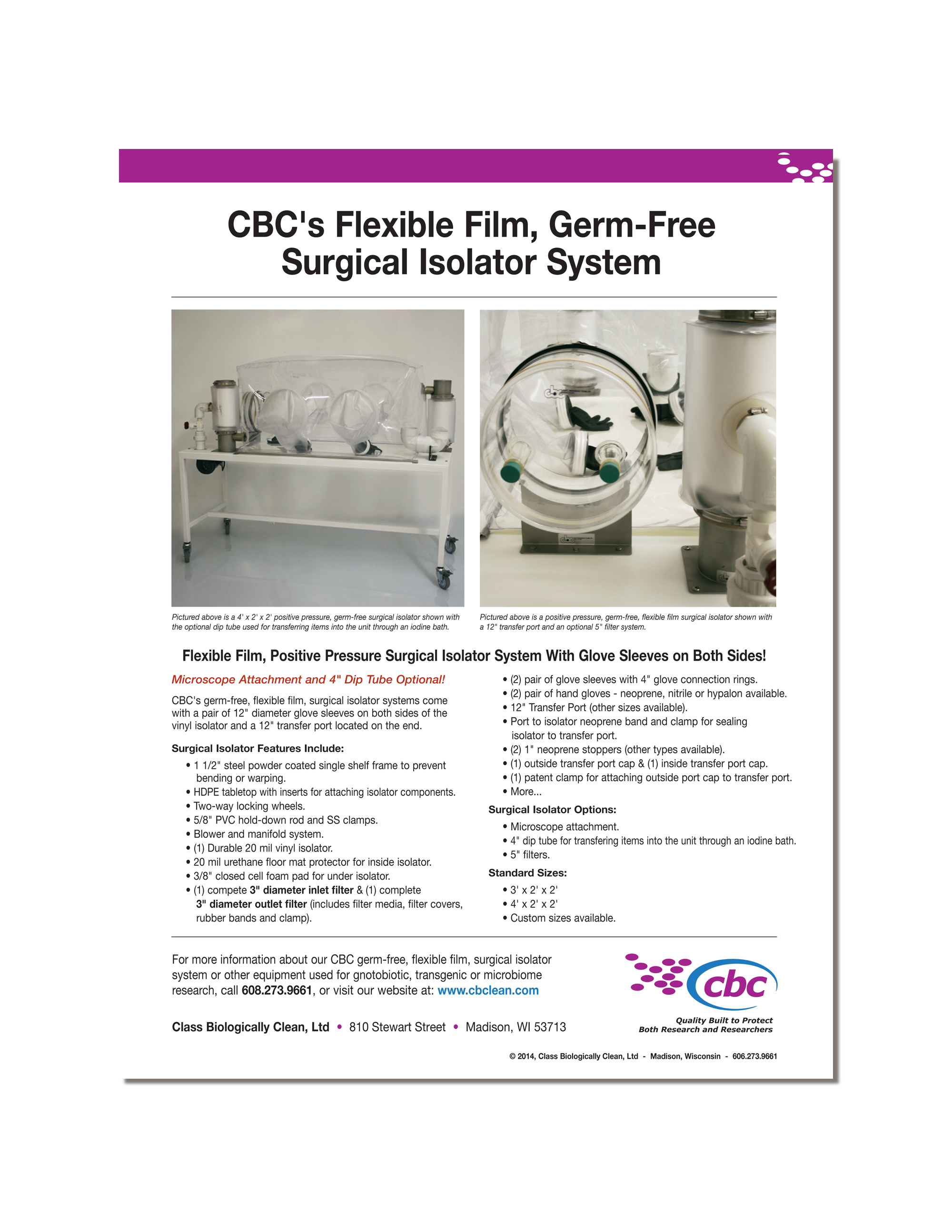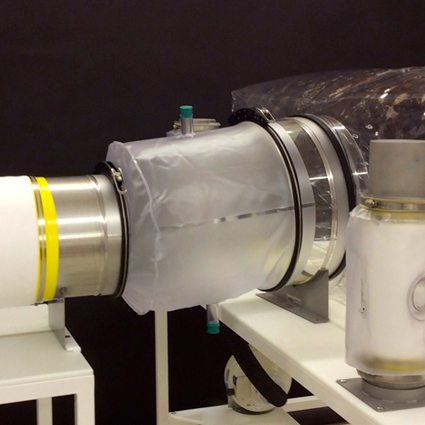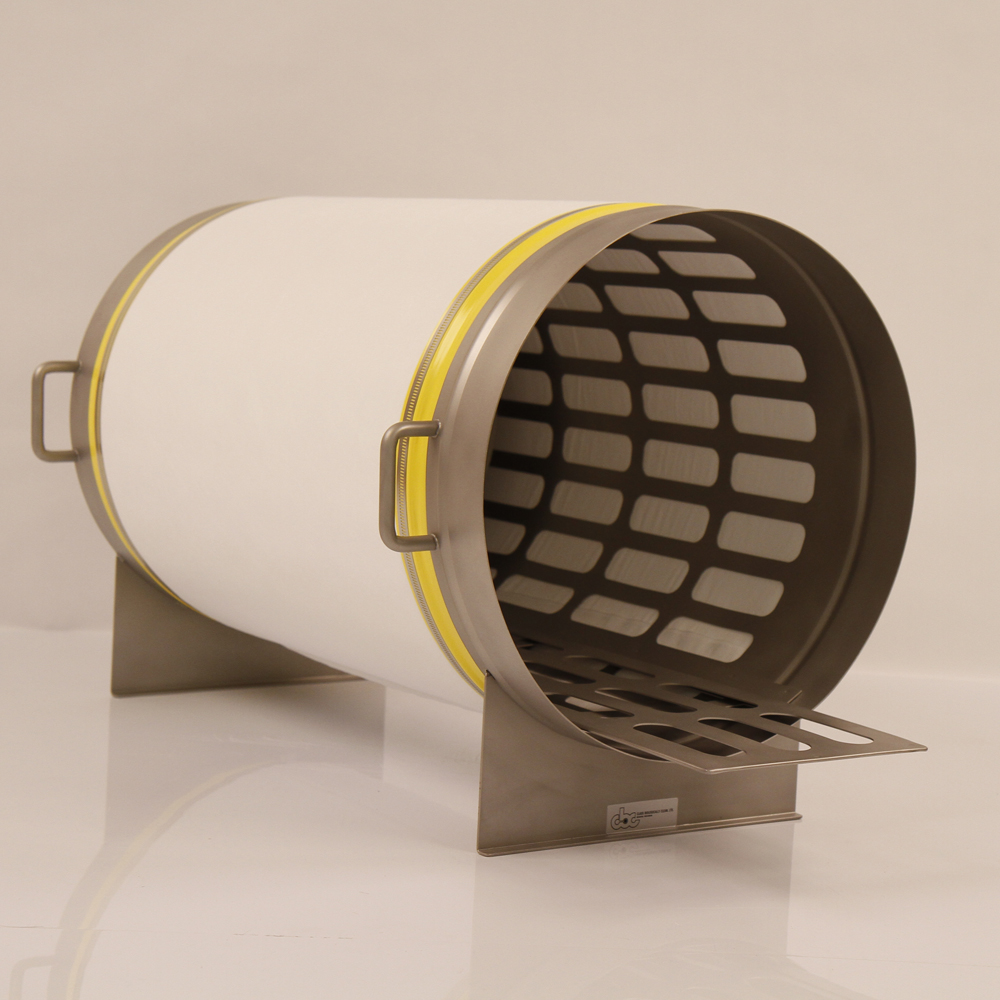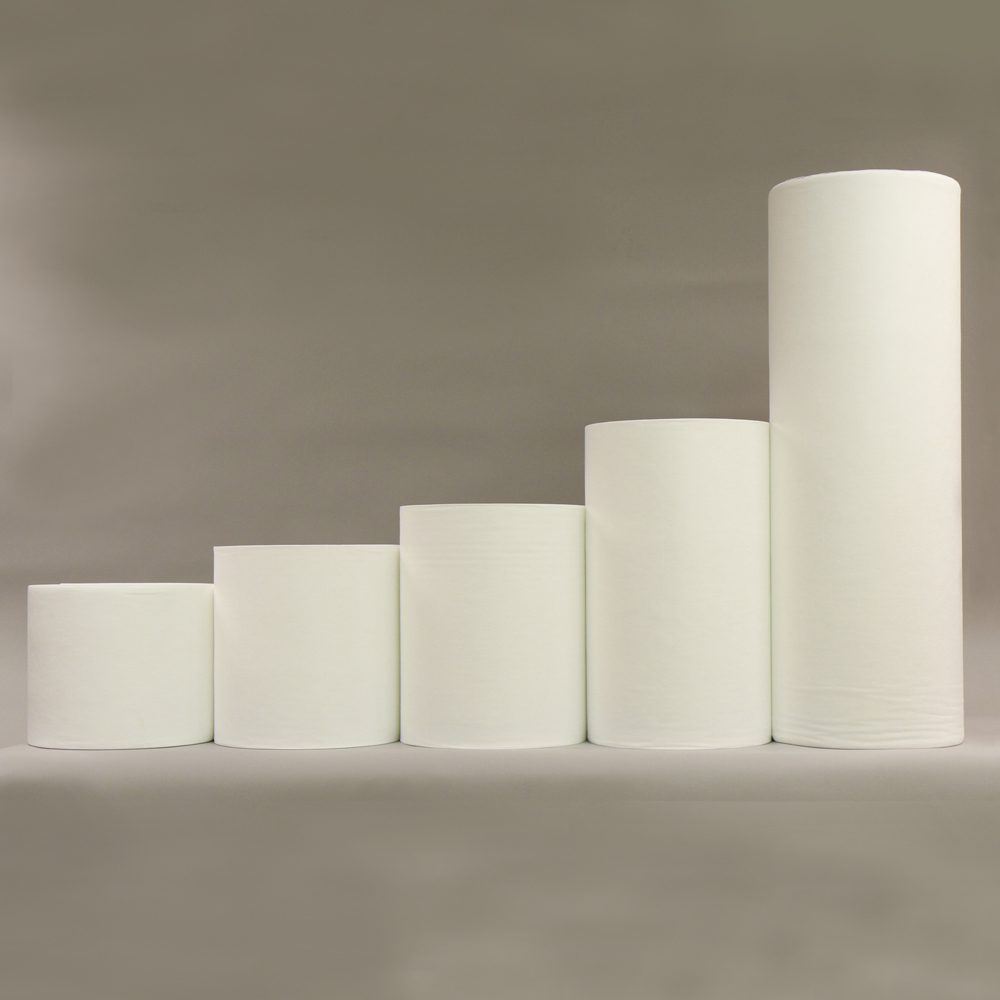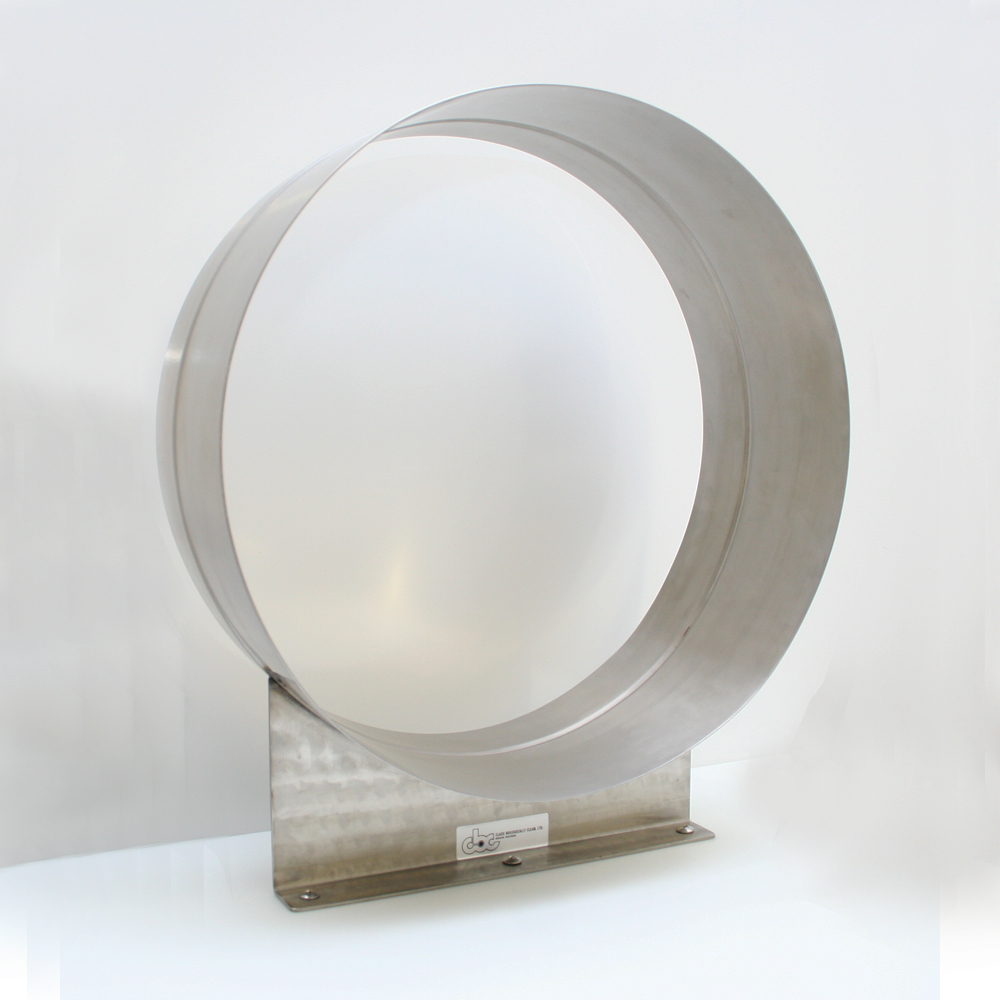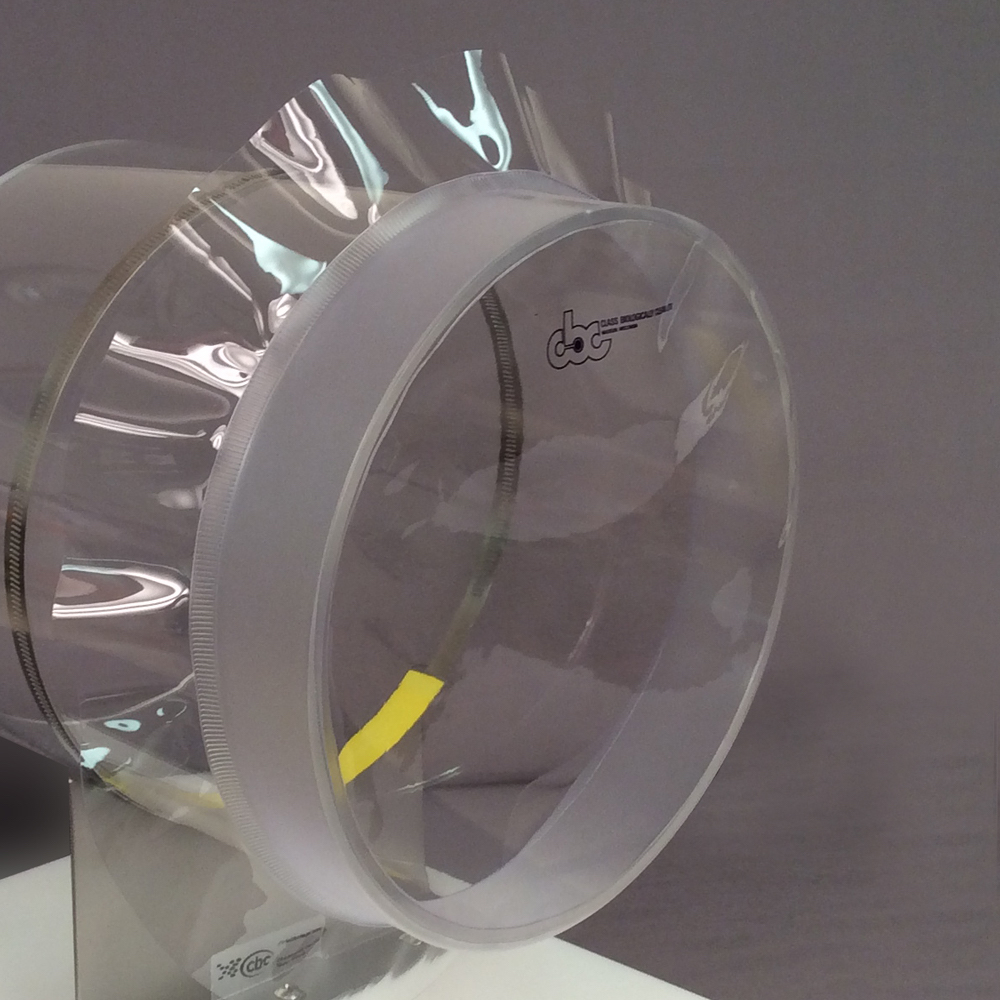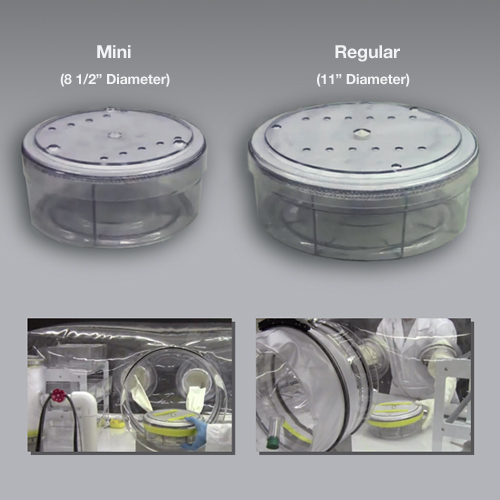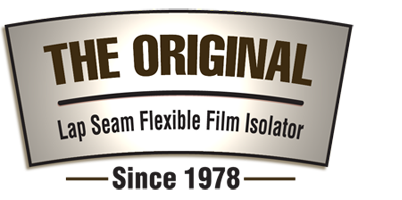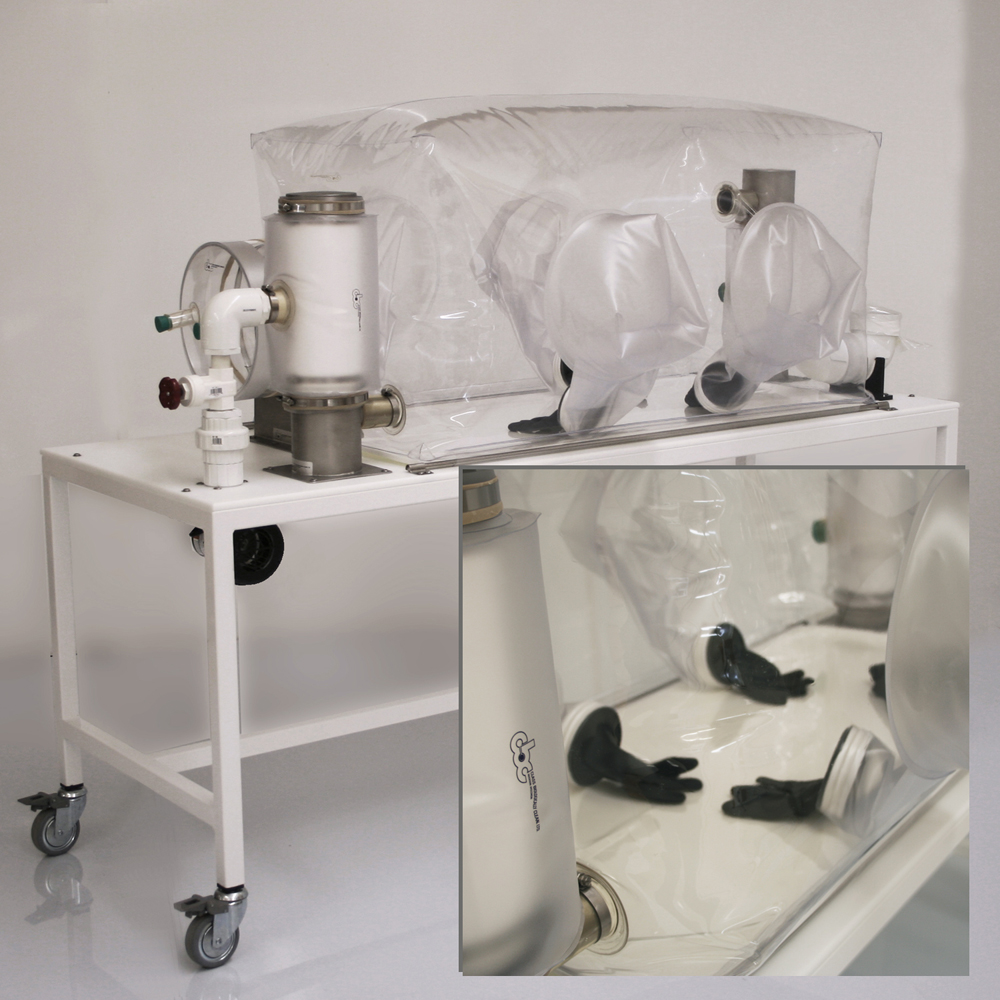Loading...
Surgical Isolator Systems
For conducting medical/research procedures on gnotobiotic mice and other rodents
CBC's germ-free, positive pressure,flexible film, surgical isolator systems come with a pair of 12" diameter glove sleeves on both sides of vinyl isolator and a 12" transfer port located on the end.
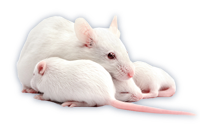
Flexible Film Surgical Isolators
Positive Pressure. Picture shown with optional 5 inch diameter filters and neoprene gloves.
CBC's Flexible Film, Germ-Free Surgical Isolators are designed to offer researchers complete environmental control.
Surgical Isolator
Schematics/Cut Sheets
4'x2'x2' Surgical Schematic/Cut Sheet (Model # 50482424121RD)
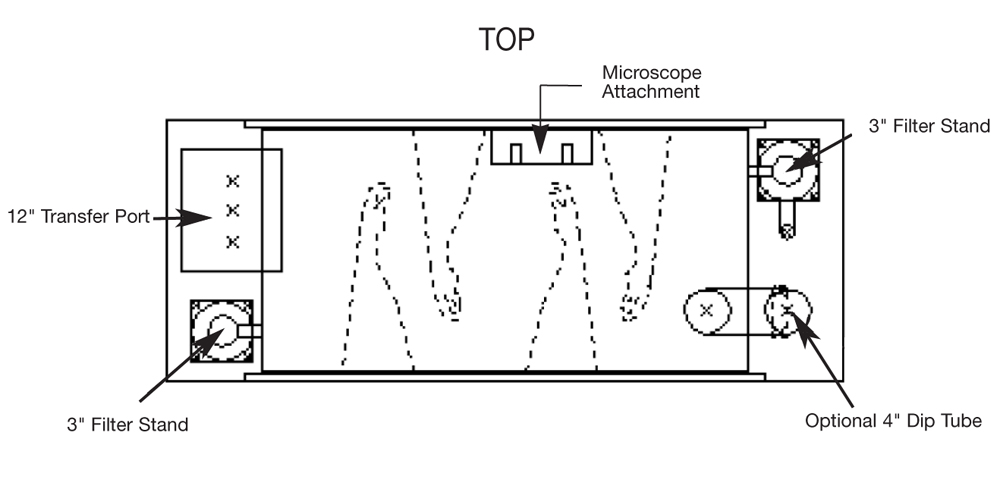
Surgical Isolator Features:
- 1 1/2" steel powder coated single shelf frame to prevent bending or warping.
- HDPE tabletop with inserts for attaching isolator components.
- Two-way locking wheels.
- 5/8" PVC hold-down rod and SS clamps.
- Blower and manifold system.
- (1) Durable 20 mil vinyl isolator.
- 20 mil urethane floor mat protector for inside the isolator.
- 3/8" closed cell foam pad for under isolator.
- (1) complete 3" diameter inlet filter & (1) complete 3" diameter outlet filter (includes filter media, filter covers, rubber bands and clamps).
- (2) pair of glove sleeves with 4" glove connection rings.
- (2) pair of hand gloves - neoprene, nitrile or hypalon gloves available.
- 12" Transfer Port.
- Port to isolator neoprene band and clamp for sealing isolator to transfer port.
- (2) 1" neoprene stoppers (other types available).
- (1) outside transfer port cap.
- (1) inside transfer port cap.
- (1) patent clamp for attaching outside port cap to transfer port.
- more...
Surgical Isolator Options:
- Microscope attachment.
- 4" dip tube for transferring items into the unit through an iodine bath.
- 5" filters optional.
Standard Size:
- 4' x 2' x 2'
- Custom sizes available
Download Printable Flyer
Download a printable flyer about the CBC flexible film, Surgical isolator system.
Download Printable PDF
Download Printable (EU) PDF
The CBC Difference
The CBC difference includes our original lap-seam sealing process and the use of 20 mil. polyurethane material that is almost indestructible and helps ensure against contamination due to accidental puncture or tear.
CBC uses a highly durable "lap seam" seal for the majority of our seams, and an even superior "cut/weld/strip seam" seal for high risk areas. Because your reputation, research or production should not risk being compromised! (See, "Pull Test" and "Puncture Demonstration" videos below.)
The CBC Lap-Seal Seam "Pull" Test
Single Seam Seal vs. CBC Lap Seal Seam Read more
Because your reputation, research or production should not risk being compromised!
20 mil. Polyurethane Puncture Demonstration
CBC's 20 mil. polyurethane material is almost indestructible and helps ensure against contamination due to accidental puncture or tear. Read more
Because your reputation, research or production should not risk being compromised!
Accessories and Components:
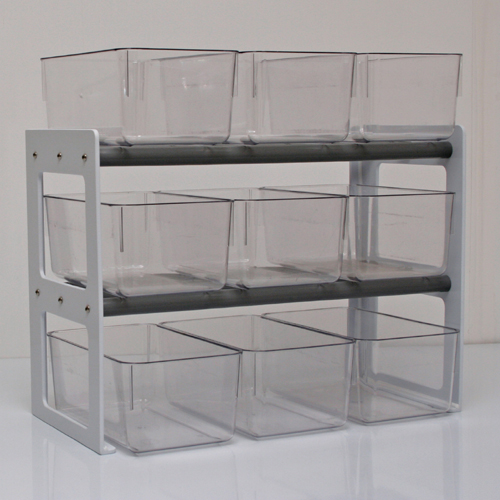
Internal 9-Cage Isolator Rack
9-cage is standard. 5-cage racks for CBC's Quad isolator system. Custom sizes are available. Read more
CBC's internal isolator cage racks are easier and faster to assemble!
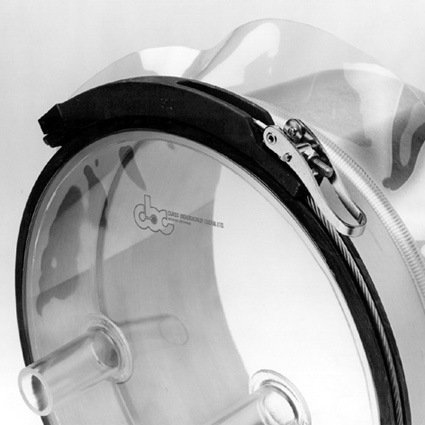
CBC Patent Clamp
CBC's Patent Clamp for quickly, and securely attaches transfer port caps. Read more
Patent Clamp with neoprene-gooved band reduces need for vinyl tape

Protecting Both Research and Researchers
Animal Research Gnotobiotic Isolators | Bio/Pharmaceutical Barrier & Containment Isolators
608.273.9661
●
810 Stewart Street, Madison, Wisconsin 53713
●
info@cbclean.com
© 2011-2022 Class Biologically Clean, Ltd. - Madison, Wisconsin - All rights reserved
® CBC is a Registered Trademark of Class Biologically Clean, Ltd.
